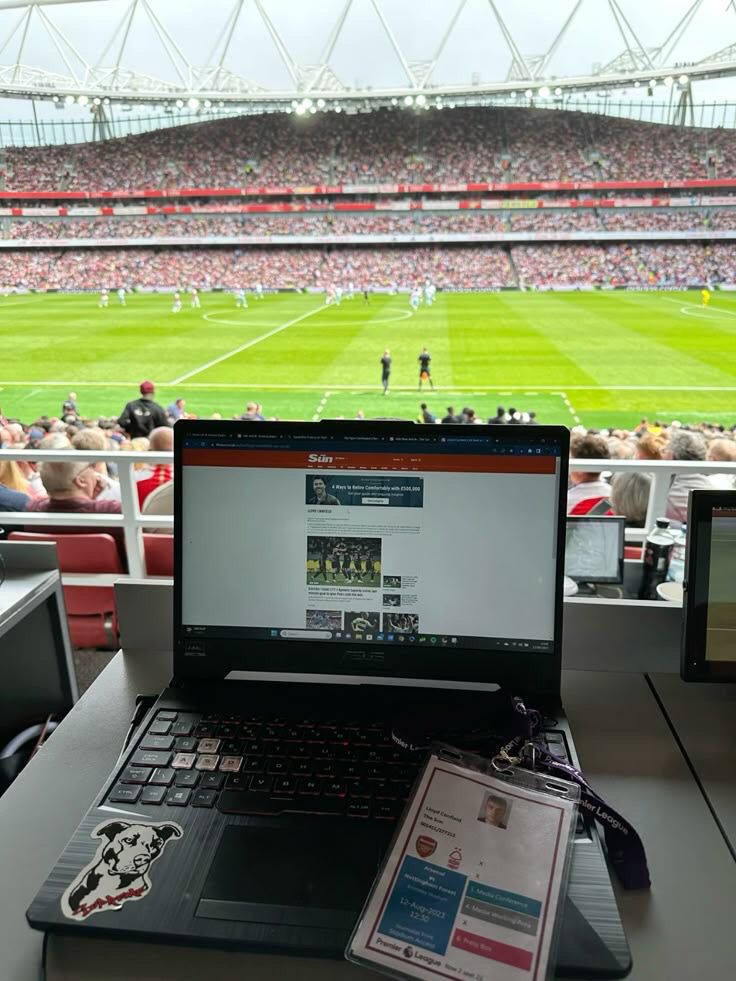Journalism serves as a fundamental pillar of a thriving society, empowering citizens through the dissemination of verified information and fostering robust public discourse.
While its role in holding power accountable and illuminating critical societal issues is well-established, its equally vital function in the world of sports often goes underappreciated.
In contemporary society, sports have emerged as a powerful force for human connection, building communities and transcending boundaries. But how do these moments of athletic prowess and collective passion achieve widespread recognition? How do fans stay informed about upcoming events, player movements, or real-time developments from games unfolding across the globe? The unequivocal answer lies with sports journalism.
Sports journalism, at its core, is the systematic practice of gathering, verifying, and reporting information related to sports topics and events to inform and engage the public. It is a dynamic and essential field that profoundly shapes our understanding of the sporting world and its broader societal impact.
The individuals dedicated to this craft are known as sports journalists. In the realm of sports, they act as the crucial bridge, translating the raw energy of competition into narratives that resonate with millions.
Sports are unique in their ability to forge community and foster friendship, embodying authenticity and inspiring moments of greatness. Watching sports is not merely entertainment; scientists suggest it’s a biochemical experience, with dopamine spiking during thrilling moments and oxytocin, the bonding hormone, rising when fans celebrate together, further cementing the communal aspect.
This profound connection between sports and human emotion is precisely what sports journalism seeks to capture and amplify, a practice that gained significant prominence with the formation of organized sports leagues in the early 19th century.
The power of sports journalism manifests in multifaceted ways, acting as the primary conduit through which information reaches the masses and shaping public perception. As Dylan Robin, a sports journalist at The New Times media, aptly puts it: “Journalism is a torchlight in the darkness; if it lights on you, you get to be seen.
So far, if there are no journalists, it won’t be easy for athletes to be known.” Before a game even begins, sports journalists are often the first to announce it, providing previews, in-depth analyses, and building anticipation among fans.
During ongoing matches, they are present at stadiums and arenas, delivering real-time updates, play-by-play commentary, and instant analysis to those unable to attend, ensuring every fan remains connected to the action. Beyond live coverage, sports journalists meticulously report on player transfers, coaching changes, and team strategies, keeping fans informed about new developments within their favorite clubs and leagues.
For instance, the meticulous work of journalists like Italy’s Fabrizio Romano, renowned for his “Here We Go!” catchphrase when breaking transfer news, or South Africa’s Carol Tshabalala, a prominent voice across continental sports broadcasting, ensures fans are always in the know about the latest movements and strategic shifts.
They also play a crucial role in capturing public sentiment, gauging what people think about sports and the emotions they harbor regarding their teams and players, thereby reflecting the collective pulse of the fanbase.
This comprehensive coverage transforms individual events into shared experiences, fostering deeper engagement and loyalty. masses and shaping public perception. As Dylan Robin, a sports journalist at The New Times media, aptly puts it: “Journalism is a torchlight in the darkness; if it lights on you, you get to be seen.
So far, if there are no journalists, it won’t be easy for athletes to be known.” Before a game even begins, sports journalists are often the first to announce it, providing previews, in-depth analyses, and building anticipation among fans.

During ongoing matches, they are present at stadiums and arenas, delivering real-time updates, play-by-play commentary, and instant analysis to those unable to attend, ensuring every fan remains connected to the action.
Beyond live coverage, sports journalists meticulously report on player transfers, coaching changes, and team strategies, keeping fans informed about new developments within their favorite clubs and leagues.
They also play a crucial role in capturing public sentiment, gauging what people think about sports and the emotions they harbor regarding their teams and players, thereby reflecting the collective pulse of the fanbase. This comprehensive coverage transforms individual events into shared experiences, fostering deeper engagement and loyalty.
Beyond mere reporting, sports journalism wields significant power in its ability to inform, entertain, and engage audiences. It goes beyond scores and statistics to uncover deeper stories, including investigative reporting on issues like corruption, doping scandals, and social injustices within the sports industry.
By shining a light on these critical matters, sports journalists hold stakeholders accountable and play a vital role in preserving the integrity of the games we cherish. Furthermore, sports journalism humanizes athletes, bringing their personal stories of triumph, struggle, and resilience to the forefront, which often inspires and motivates audiences far beyond the playing field.
It also serves as a catalyst for conversations and debates, providing platforms for fans to voice opinions on team strategies, the fairness of officiating, and the broader societal implications of sports. This critical function contributes to a more informed and engaged fan base, deepening their connection to the games they love.

The economic impact is also undeniable; as the sports industry has grown in wealth and influence, sports journalism has become an integral part of its commercial ecosystem, driving interest and investment.
The landscape of sports journalism has evolved dramatically with the advent of digital media and specialized platforms. Dedicated sports channels, online news portals, and social media have created unprecedented opportunities for instant updates, in-depth analysis, and direct interaction between athletes, journalists, and fans.
This digital transformation has democratized access to sports information, allowing for a broader reach and more diverse content. However, this evolution also brings challenges. Sports journalists must navigate the pressures of immediacy, combat misinformation and the rise of deepfakes, and maintain ethical standards in an increasingly competitive and fast-paced environment.
They must uphold key journalistic practices, ensuring truthful and fair representation, and avoiding biased or discriminatory language. The imperative remains to deliver accurate, compelling, and insightful narratives that go beyond mere scores, exploring the human stories, strategic brilliance, and cultural impact of sports.
Ultimately, the powerful quote, “The first thing is news,” perfectly encapsulates the symbiotic relationship between journalism and sports. For any event, any player, or any team to capture public imagination and build a global following, it must first be known.





